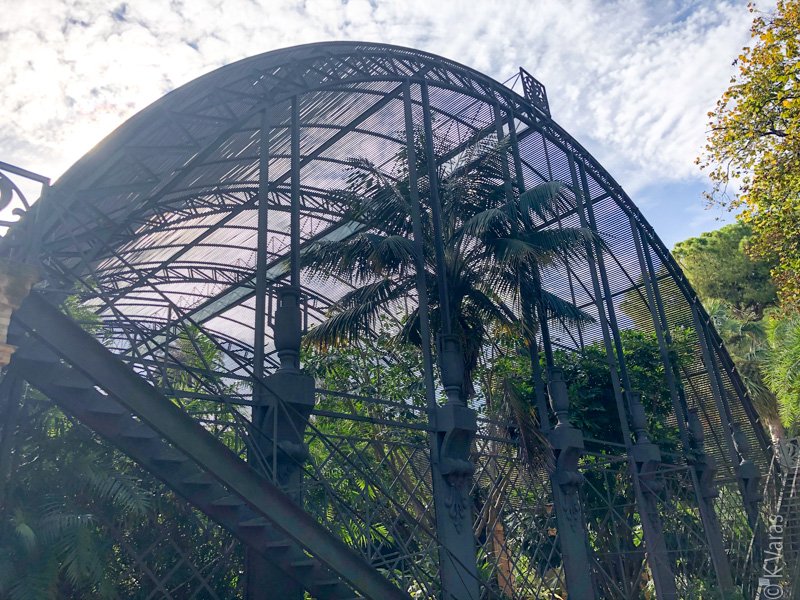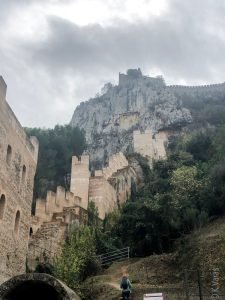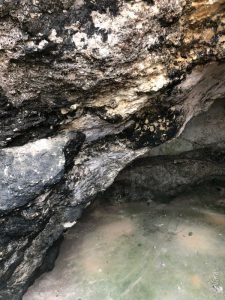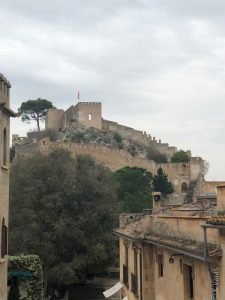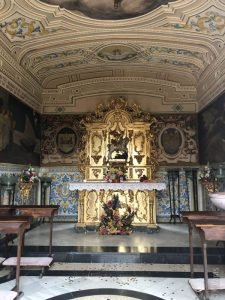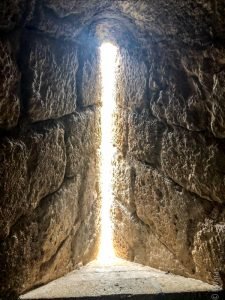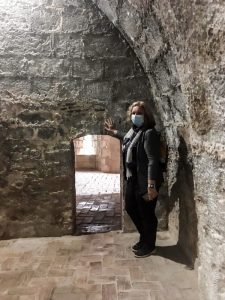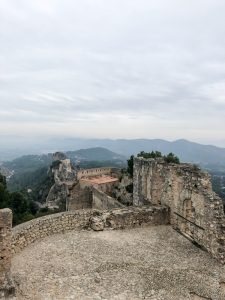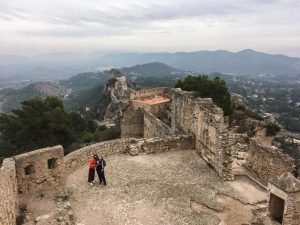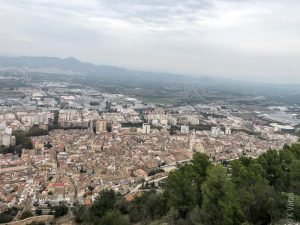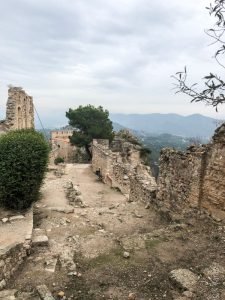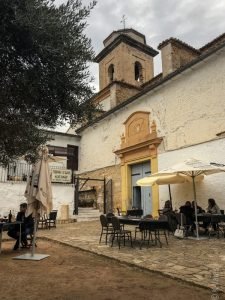
Castell de Xàtiva
The days of (temporary) solitude have, apparently, come to an end. My AirBnB host, Sagrario, has finally returned from her trip to Madeira (the island, not the town in Portugal), and also brought with her her friend, Gulzira, who has just arrived from Kazakhstan. Within moments I went from being alone most of the time to having two roomies, and what fun they both are. Already in the first few minutes of meeting Sagrario, I had a feeling we were going to become great friends: her happy energy is contagious and I know this was a very good choice of accommodations after all, lack of an elevator notwithstanding. I’m also certain you will be hearing lots more about her soon.

One of the unfortunate victims of the latest round of Covid-related closures and furthering of restrictions, has been a planned trip with the Valencia Language Exchange folks to Xàtiva and Bocairent, a couple of mountain towns south of València. However, upon hearing this news and undeterred by restrictions or cancellations, Sagrario came to our rescue and offered to take us there in her car! Being someone who loves to explore new and old places, I don’t think it was a huge sacrifice on her part either. And all this within a handful of days of meeting us (and by us I include Ewa)! Some people are just awesome.
On a somewhat cloudy Saturday, and not terribly early in the morning, all four of us piled up in Sagrario’s rather well-worn Audi and headed out of the city, travelling south. A word about the Audi … there is a very good reason why it has a collection of scratches that would make Adrian weep: her parking space is in an underground lot across the street from her building and the exit onto the very narrow Carrer dels Juristes is, simply, impossible. Or at least it is impossible without, at some point, scratching your car. To make any maneuvers in or out of the gate you come so perilously close to the sides of the gate, building, and building opposite, that I’m in awe every time I see her do it and not hit one of them. To have a large (or heck, even a medium-sized) car and live in Ciutat Vella is pretty much an insane proposition, especially if you care about its finish.
The drive to Xàtiva itself was just over an hour, and we headed for the castle, bypassing the city. It became obvious, however, that we could not drive all the way up to the castle so we found a parking spot near the start of the zig-zagging road that led to it instead. I got the feeling immediately that I was going to be climbing a lot of hills and stairs that day. Fortunately, the road wasn’t too bad to start with and we made our way up quickly.

The first stop was La Torre del Sol, an ancient part of the massive ramparts that used to surround not only the castle but parts of the city below as well. This tower is supposed to be a great place to see the sun rise; unfortunately for us we were there much past sunrise, and the clouds surrounding the area didn’t help either. The second stop was just off one of the sharp curves of the road: a grotto carved (naturally, I’m going to assume) into the rocks below the castle, where water pools at some point in the year, though, to be honest, I did not read the accompanying sign nor take a photo of it for future reference, so I have no clue what it was all about. Suffice to say it was a cool spot to check out and rest after the climb, premature as it was. There were still many more meters to walk to reach the main gate.
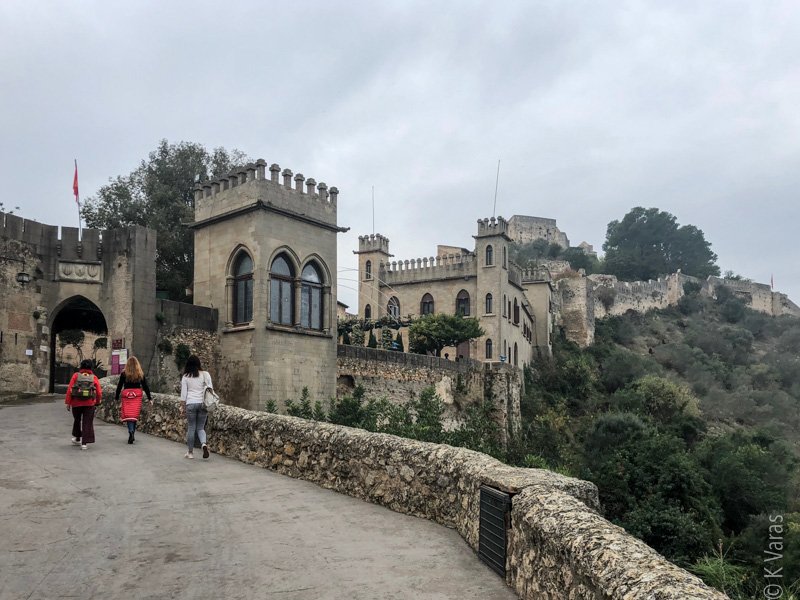
The main gate didn’t disappoint, either. It turned out that the entrance to the castle is in fact roughly in the middle of it, with one set of buildings stretching, to the north (Castell Menor), and the other to the east (Castell Major). This middle part has been restored to house a visitors’ centre, a little restaurant, and a chapel, which I’m sure was a late add-on, seeing how the castle itself dates from at least second century BCE, when the Carthaginians ruled the area. There is a theory that Hannibal made his preparations here for the siege of the Roman city of Saguntum, which took place in 219 BCE. In fact, the fortress was situated next to the Via Augusta, the great road that lead from Rome, up the coast of Italy, across southern France, and down the coast of Spain to Cartagena and Cádiz. So many towns in this region are of significant importance in the history of Europe, and this place is as old and as important as it gets. Xàtiva, it should be noted, is also the birthplace of the Borgias, one of the most powerful families of the European Renaissance period, and I’m looking forward to watching the Borgia series as soon as I finish the one about the Medici.

After a brief respite, it was time to attack the Castell Major and its hundreds of steps. As we climbed up and up and up, it became increasingly clear just how huge this fortress was, and how intimidating its ramparts would have been to anyone trying to scale them. No wonder Xàtiva was an important strategic location: you can see for miles, even on a cloudy day. I won’t bore you with details of my climbing abilities (not many); let me assure you, however, that I managed to make it pretty much to the top, the equivalent of about 11 stories. Not as many as the Peñíscola/Morella trip (26), but not too bad, even if I say so myself. My problem is that going up is rough on my lungs (you’d think this wold be getting easier by now), and going down is even rougher on my knees, so I hope you appreciate, again, the effort I put into getting you those pictures 😉. On the other hand, I wouldn’t trade these opportunities for anything in the world.
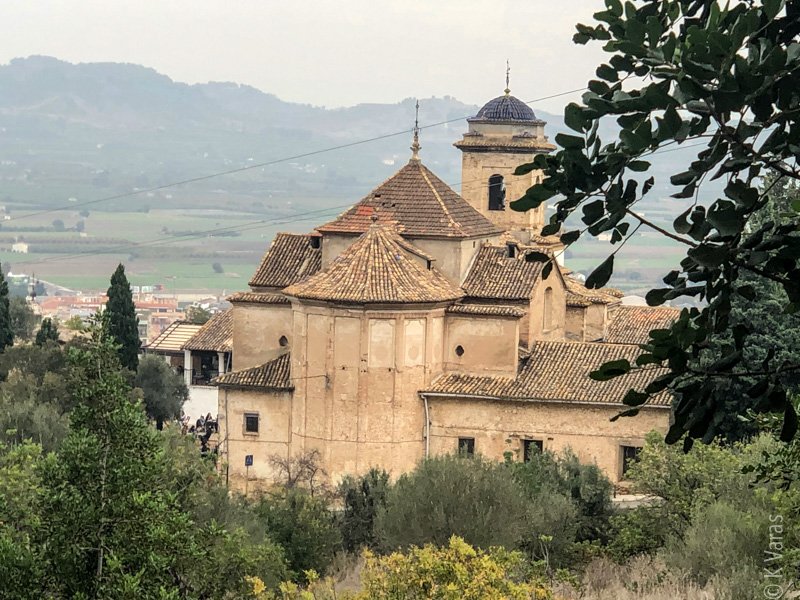
After coming down back to the midpoint (main entrance) we rested a bit again, and pondered where to eat lunch. Castell Manor, we decided, would have to wait for another time, perhaps when some of you decide to come here with me. To our pleasant surprise, while waiting for the three of us to visit the castle, Sagrario had made reservations at a restaurant at the bottom of the windy access road located adjacent to the Ermita Sant Josep, a picturesque church below the fortress. Its specialty is Arroz al Forno and after all the exertions we were more than ready and willing to chow down on something yummy. As we made our way back down the hill, the rain started, and we had to wait a little for a table to be set up for us under some umbrellas, because yes, in Spain, you eat outside even if it rains in November. The food was very good, the wine even better, and the company exceptional. It was rather amusing to watch Sagrario and Gulzira communicate, mainly since their only common language is English and neither one speaks it all that well, making their conversations rather comical to listen to. And yet they are the best of friends and get along super well. This just goes to tell you that when someone clicks with you, nothing gets in the way of friendship, especially not language.


